As a professional in the industrial manufacturing industry, I have extensive experience working with various types of clamps. One type of clamp that I find particularly useful is the pneumatic push toggle clamp. These clamps offer several advantages over other types of clamps and are commonly used in a range of industrial applications. In this article, I’ll answer ten common questions related to pneumatic push toggle clamps.
What is a pneumatic push toggle clamp?
A pneumatic push toggle clamp is a type of clamp that uses compressed air to open and close the clamp. The clamp has a pivoting lever that toggles between the open and closed positions. When the lever is pushed down, the clamp closes, and when it’s lifted, the clamp opens. The compressed air is used to control the movement of the lever and hold the clamp in place.
Pneumatic push toggle clamps come in different sizes and styles to accommodate a range of applications. They are commonly used in manufacturing and production environments, including metalworking, woodworking, and plastic manufacturing. The traditional clamps are vertical toggle clamps and horizontal toggle clamps, etc. They all require manual operation.
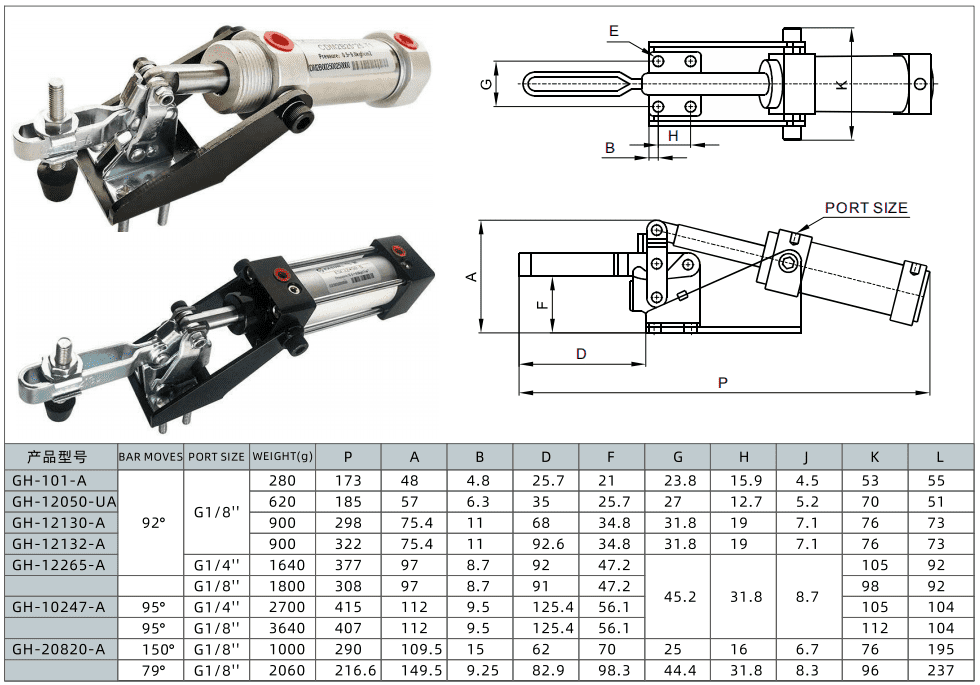
What are the benefits of using pneumatic push toggle clamps?
Pneumatic push toggle clamps offer several benefits over other types of clamps. Firstly, they are easy to operate, requiring minimal effort to open and close. This makes them ideal for use in repetitive operations that require a high level of productivity.
Additionally, pneumatic push toggle clamps provide consistent and reliable clamping force, which is critical for ensuring that the workpiece is held securely in place. This helps to prevent damage to the workpiece and ensures that it’s held in the correct position during manufacturing or processing.
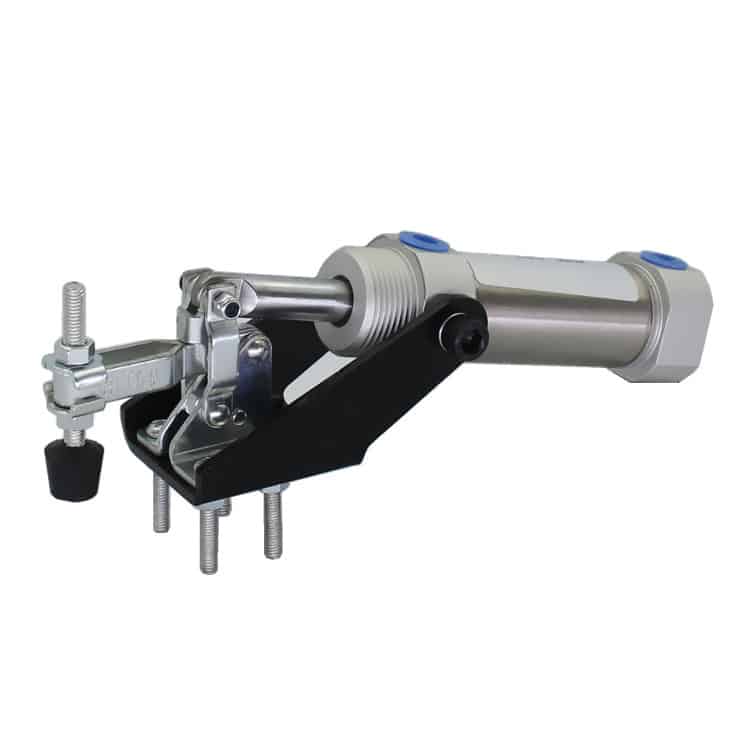
What are some common applications for pneumatic push toggle clamps?
Pneumatic push toggle clamps are commonly used in a range of industrial applications. They are ideal for use in repetitive operations, such as welding or drilling, that require a high level of precision and control. They are also commonly used in metalworking, woodworking, and plastic manufacturing.
In metalworking, pneumatic push toggle clamps are used to hold metal parts in place during welding, drilling, or grinding. And in woodworking, they are used to hold wooden parts in place during cutting, sanding, or routing. And in plastic manufacturing, they are used to hold plastic parts in place during molding or extrusion.
How do I choose the right pneumatic push toggle clamp for my application?
Choosing the right pneumatic push toggle clamp for your application requires considering several factors, including the size and weight of the workpiece, the required clamping force, and the type of material being used. It’s also important to consider the available compressed air supply and the required opening and closing speed of the clamp.
When selecting a pneumatic push toggle clamp, it’s important to choose a clamp that’s compatible with the application and provides the required clamping force. This will ensure that the clamp can hold the workpiece securely in place and prevent damage during manufacturing or processing.
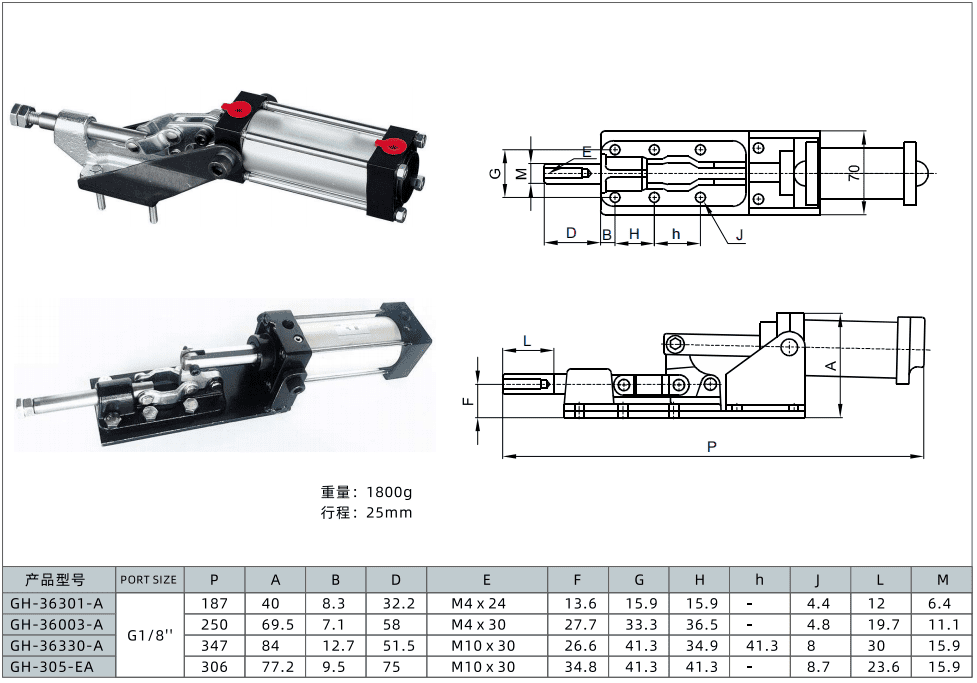
How do I install a pneumatic push toggle clamp?
Installing a pneumatic push toggle clamp is a straightforward process. First, the clamp should be mounted securely to the workbench or fixture using bolts or screws. Next, the compressed air supply should be connected to the clamp using the appropriate fittings.
Once the clamp is installed, it should be tested to ensure that it’s operating correctly. This can be done by manually opening and closing the clamp several times and checking that it’s holding the workpiece securely in place.
How do I maintain a pneumatic push toggle clamp?
Maintaining pneumatic push toggle clamps is essential to ensure their longevity and optimal performance. Here are some tips for maintaining your pneumatic push toggle clamp:
Regular cleaning: Regular cleaning is crucial to prevent dust, dirt, and debris from accumulating on the clamp. It is recommended to use a clean cloth or brush to wipe the surface of the clamp.
- Lubrication: Pneumatic push toggle clamps require regular lubrication to maintain their smooth operation. Apply a small amount of lubricant to the moving parts of the clamp, such as the toggle lever, piston, and cylinder.
- Inspection: Regular inspection of the clamp’s components is necessary to ensure that they are in good condition. Check for signs of wear and tear, such as cracks, deformation, or corrosion. If any of these signs are present, the clamp should be replaced.
- Storage: When not in use, pneumatic push toggle clamps should be stored in a dry and clean environment. Make sure to keep them away from moisture and corrosive substances.
- Proper usage: Finally, the proper use of the clamp is crucial to prevent damage and maintain its performance. Follow the manufacturer’s guidelines for usage, such as the maximum weight capacity, and avoid overloading the clamp.
By following these maintenance tips, you can ensure that your pneumatic push toggle clamp remains in good condition and performs optimally for a long time.
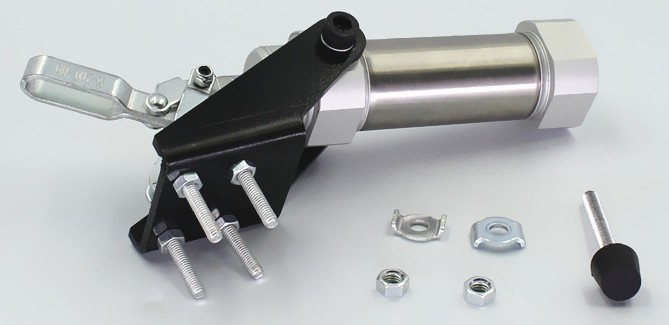
How do I install and operate pneumatic push toggle clamps?
When installing a pneumatic push toggle clamp, it is important to first ensure that the mounting bracket or base is securely attached to a stable surface. This will help to prevent any movement or instability during use, which could potentially lead to injury or damage to the workpiece. It is also important to make sure that the clamp is installed in a location that provides easy access for the operator.
Once the clamp is installed, it can be operated using a push button or foot pedal. The operator simply needs to press the button or pedal to activate the clamp, which will then firmly hold the workpiece in place. The pneumatic pressure in the clamp will keep it securely locked in place until the operator releases the clamp. This can be done either by pushing the button or by releasing the foot pedal, depending on the type of clamp being used. Proper operation of the clamp is important to ensure safe and efficient use, and operators should always follow the manufacturer’s instructions for use.
What are the maintenance requirements for pneumatic push toggle clamps?
To ensure optimal performance and longevity of pneumatic push toggle clamps, regular maintenance is necessary. One essential maintenance task is to keep the clamp clean and free from debris. This can be done by wiping down the clamp with a clean cloth after use or blowing it with compressed air. It is also important to lubricate the clamp regularly with a suitable lubricant to prevent corrosion and reduce wear and tear. The frequency of lubrication will depend on the frequency of use and the working environment. Some manufacturers may recommend specific lubricants to use with their clamps.
In addition to cleaning and lubrication, it is also crucial to inspect the clamp for any signs of damage or wear. This includes checking for cracks, worn-out parts, and loose screws. Any damaged or worn-out parts should be replaced immediately to avoid compromising the safety and performance of the clamp. Proper maintenance will help extend the lifespan of the clamp and ensure its safe and reliable operation.
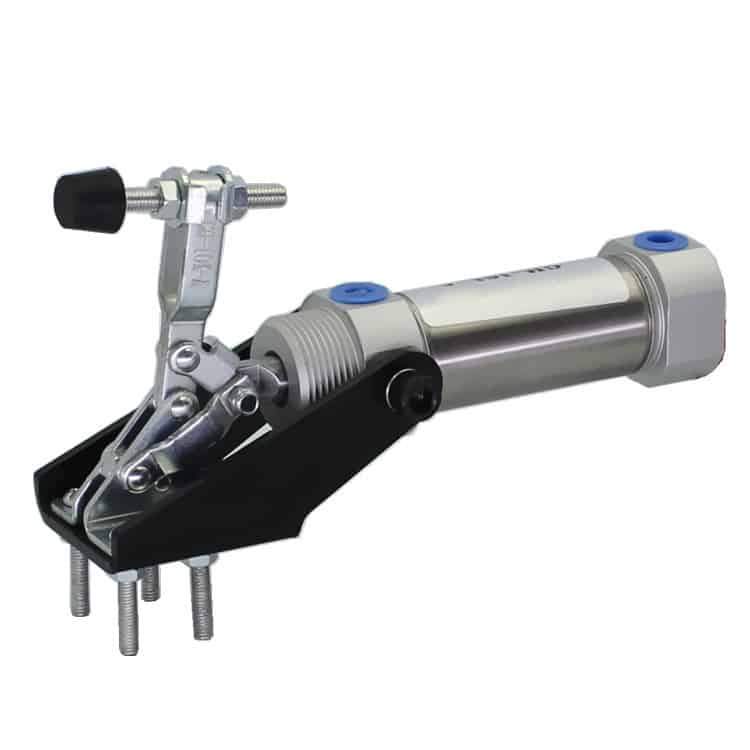
Can pneumatic push toggle clamps be used in hazardous environments?
Pneumatic push toggle clamps can be used in hazardous environments, but it is crucial to ensure that they are rated and designed for such use. Hazardous environments can include those with high temperatures, dust, or chemicals that can potentially damage the clamp. It is essential to select a clamp that can withstand the specific hazardous environment it will be used in.
In some cases, it may also be necessary to take additional safety measures, such as using protective covers or shields to prevent debris or other hazardous materials from damaging the clamp. Regular inspection and maintenance of the clamp can also help ensure that it continues to function properly and safely in hazardous environments.
What are some common applications of pneumatic push toggle clamps?
Pneumatic push toggle clamps are widely used in a variety of applications due to their versatility and ability to provide a secure hold. One common application of these clamps is in welding, where they are used to hold parts in place during the welding process. They can also be used in machining, where they can secure workpieces while being drilled or milled. Additionally, pneumatic push toggle clamps are used in assembly lines, where they can hold parts in place while being assembled. They are also commonly used in woodworking, where they can hold pieces of wood together while being cut or sanded.
Apart from these, pneumatic push toggle clamps are also widely used in the automotive industry, where they are used to secure parts during repair or assembly. In the aerospace industry, these clamps are used to hold components in place during the assembly of aircraft. The construction industry also utilizes pneumatic push toggle clamps in tasks such as holding molds together during concrete pouring. Overall, these clamps are versatile tools that can be used in various industries and applications.
MAILONG is a professional manufacturer of industrial toggle clamps, if you are looking for a supplier of custom toggle clamps, then you have come to the right place, contact us now to get your custom copy and price.
